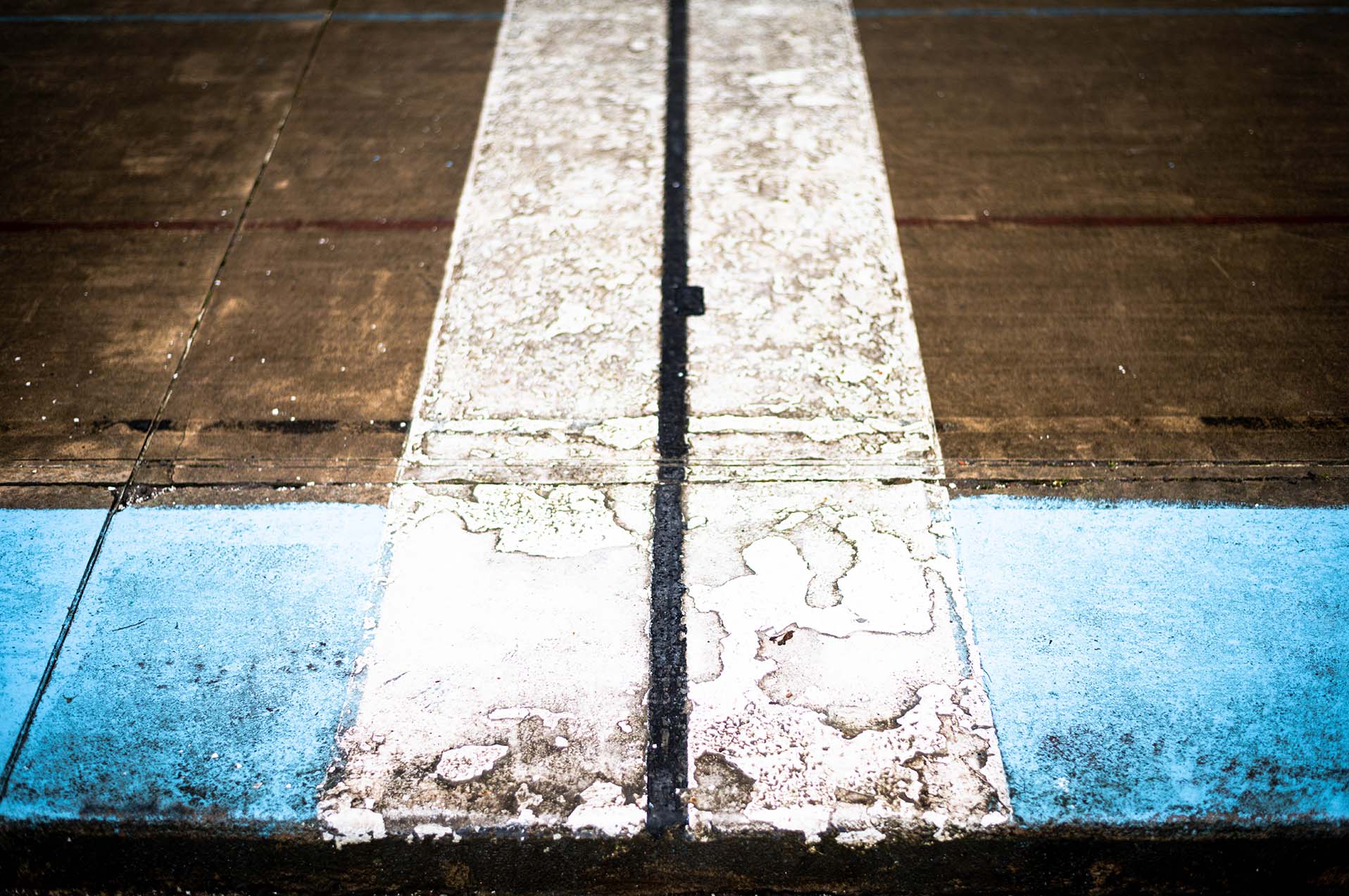No World Hour Record has ever been set here, and it has never hosted a World Championship. But for all practical purposes, the Vélodrome de Roubaix remains the most famous cycling track in the world. And come this weekend, it will once again open its arms, as it hosts the finish of the iconic Paris-Roubaix and Paris-Roubaix Femmes races.
“That’s what sets it apart from all others,” say Pascal Sergent, one of France’s top cycling historians, and a fan since he witnessed his first Roubaix finish in the velodrome as an eight-year-old back in 1966. “It is the only velodrome in the world to host the finish of one of cycling’s Monuments. As a result it is known the world around.”

The main entry from the stands to the track remains largely unchanged.
Opened in 1936, the Roubaix Velodrome is a massive 500-metre outdoor track that is part of a larger sporting complex, and according to Sergent, it was conceived primarily as a community track.
“It was built in the heart of a period in France where we really wanted to encourage kids to participate in sports, and that was a really strong movement here around Roubaix with all of the textile industries. People really wanted to have their kids in sports. The Parc des Sports had an athletic track, a football field, all kinds of activities were practiced here. And it was simply logical that there was a velodrome because cycling was really popular in this corner of France. There were lots of local races, and then of course, there was Paris-Roubaix.”

The facade to the stands of the Roubaix vélodrome has lost much of its lustre, but we can still see the intricate decorations from when it was first built.
But while the velodrome was completed in 1936, it was not until 1943 that it hosted the first finish Paris-Roubaix. “It's ironic, because while it was the first finish of Roubaix in the velodrome, none of the photographers wanted to capture the crowds. It was during the heart of World War II and France was occupied. And on that day, there were loads of Germans on the infield. As a result, the photographers all just focused on Marcel Kint, the Belgian winner. They didn’t want to show the German occupiers.”
Since then, however, the Roubaix Velodrome (officially Vélodrome André-Pétrieux) has staged virtually every finish of this legendary cobbled Classic—with only few exceptions—as well as more than a dozen Tour de France stages.
And if this velodrome could talk, it could certainly tell some stories.
There was that amazing finish in 1990 when Belgian Eddy Plankaert and Canadian Steve Bauer threw their bikes over the bold white finish line separated only by millimetres in a race that was too close to call. There was the time in 1969 when the prologue of the Tour de France finished on the vélodrome and saw a German rider Rudi Altig beat a certain Eddy Merckx. And then, there was the time in 1996, when three riders from the Mapei team raced across the line together in an unprecedented one-two-three finish.

The finish line on the old Roubaix track may have seen better days. But it has also had a front row seat to some of the all-time great moments in the Hell of the North.
Today the old velodrome is worse for the wear. The aging Art Deco entryway to the covered bleachers is falling into frightening states of disrepair, while the track itself is rough and sorely weathered, as holes have worked their way into the surface, and the painted stripes around the track chip and peel with time. “The track was made of concrete blocks,” explains Sergent. “All it takes is a hard winter where it freezes over a lot, the and the concrete starts to break up.”

Winter rains and freezing temperatures are constant challenges to this aging track.
Sergent admits that, in the tracks current state it is unfit to host events. “We still had local weekly races here up until the 1990s but that is just not possible now. Only the finish of Roubaix is still held here.”
And yet, come the weekend, the track will once again come alive and the fans that pack velodrome will simply erupt in applause when the first riders enter. It is an annual tradition, a sort of communion between the fans and their heroes that is as timeless as the velodrome itself.

The old velodrome instantly comes to life when the first riders arrive each year.
But while Sergent admits that the aging velodrome has seen better days, he has no concern for its future. “The velodrome’s place here in Roubaix has never been questioned,” he says. “It’s not officially a historic monument, but everyone knows that it is. And even though it is not protected legally. It is protected by its legend.”

The clubhouse of the Vélo Club de Roubaix remains open all year long and serves as both museum and watering hole. Stop on by one day!
And while only one race still finishes on the old velodrome, it remains open to the public most days and, as does the clubhouse of the Vélo Club de Roubaix, where fans can have a beer at the bar and bask in the memories of an aging velodrome filled with stories.
































